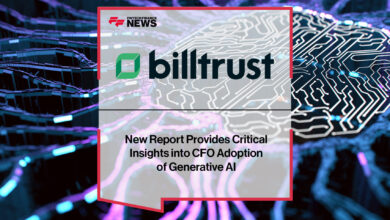Publicis Sapient: Finserv Revolution with Gen AI & ML

In today’s digital landscape, many financial institutions are far down on their AI journeys, incorporating predictive analytics and leveraging customer insights to offer better products and more intelligent insights.
We speak to Sean O’Donnell, GVP & Chief Technology Officer for FS International at Publicis Sapient, on ways financial institutions can continue to keep up with the growing pace of change.
“Many firms have been actively involved in this space for the last five to ten years, strategically investing in data infrastructure and technologies such as predictive analytics engines and innovation labs focused on AI,” says Sean.
“This strategic investment has positioned them well in the evolving landscape.”
Publicis Sapient: Keeping pace with fintech innovation
Though they may be well-positioned, keeping up with the pace of innovation does pose challenges for financial services providers, particularly when it comes to generative AI advancements.
“This is particularly true considering the significant levels of investment required,” notes Sean. “Fortunately, a growing array of tools and technologies make this endeavour more accessible. Cloud service providers like Amazon Web Services, Microsoft, and Google offer robust tooling allowing users to leverage AI and gen AI capabilities.
“This enables financial services firms to enhance customer journeys, improve service and product offerings, and integrate AI into their existing value chains seamlessly.
“The future looks promising for financial institutions as they continue to embrace AI and machine learning technologies to drive innovation and meet evolving customer demands.”
Harnessing the benefits of AI
For Sean, the primary benefits of AI lie in its ability to transform what customers can accomplish, streamlining processes from complex tasks to simple actions through automation.
“Gen AI enhances customer engagement with financial services firms, such as banks, insurance companies and wealth management firms, simplifying customer journeys,” he notes.
“This is exemplified by the emergence of intelligent chatbots, which provide more intuitive and powerful access to information, answering common queries more effectively.
“Furthermore, AI facilitates a more personalised customer experience by intuitively presenting relevant data at the right moment. It aids firms in streamlining their support processes, particularly in large banks burdened with legacy technologies and processes.”
Powering fraud prevention
As gen AI capabilities have expanded across the market, so too have fraudsters’ ability to use the technology for malicious gains. However, finserv providers can use the same technology to fight back.
Sean expands: “Fraud detection is a critical domain where AI and machine learning (ML) technologies are increasingly deployed. In the past year, gen AI has transformed the landscape, addressing historical challenges that plagued service firms.
“Historically, most fraud detection platforms relied on static rules engines to determine how a bank responds to potential threats. These rule-based systems, while effective, often become complex and cumbersome to maintain.
“In contrast, AI and generative AI offer significant advantages in fraud detection. By leveraging vast amounts of data in real-time, these systems create dynamic models to understand the current environment and predict future threats. This enables them to act swiftly and proactively.
“Generative AI is excellent at detecting potential fraud alerts in real-time, continuously adapting and evolving its understanding of fraud patterns. This agile approach contrasts starkly with manual intervention and slow rule updates of traditional systems.
“As a result, organisations now have unprecedented capabilities to detect and protect their customers from fraudulent activities.”



